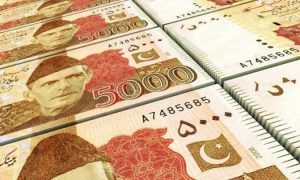Pakistan’s inflation is set to rise to 29.5% in the fiscal year 2023 due to the weaker Rupee, as well as higher energy and food prices, warned the World Bank in its report on macro poverty outlook for Pakistan, released on Friday. However, the report also suggested that Pakistan’s inflation would eventually moderate as global inflationary pressures dissipate. Real GDP growth is predicted to slow down to just 0.4% in the fiscal year 2023, with agricultural output contracting for the first time in more than 20 years due to the catastrophic floods that occurred last year.
The industry output is also expected to shrink, resulting in weakened confidence and higher borrowing costs, while fuel prices and supply chain disruptions are set to weigh on the wholesale and transportation services sectors, negatively impacting output growth. Although output growth is anticipated to gradually recover in the fiscal year 2024 and 2025, it is expected to remain below potential due to low foreign reserves and import controls curtailing growth. Poverty in Pakistan is also set to increase as a result of weak labour markets and high inflation, with the lower middle-income poverty rate expected to rise to 37.2% in the fiscal year 2023.
The report highlights the vulnerability of poor households, which are dependent on agriculture and small-scale manufacturing and construction activity, to economic and climate shocks. The macroeconomic outlook is predicated on the completion of the IMF-EFF program, sound macroeconomic policy, continued structural reforms and adequate external financing, with the fiscal deficit projected to narrow to 6.7% of GDP in the fiscal year 2023 and further over the medium term as fiscal consolidation takes hold.
However, the report also highlights several key risks to this outlook, including non-completion of the IMF program due to policy slippages, non-materialization of expected financing, political instability, deterioration of domestic security and external economic conditions and financial sector risks associated with revaluation losses, liquidity shortages and high sovereign exposure. The high Pakistan’s inflation and reduced incomes could also lead poor households to lower school attendance and food intake, with health and education outcomes also at risk, warns the report.
Read More: Pakistan’s Foreign Exchange Reserves Decline by $170 Million to Reach $4 Billion: SBP
Economic growth increased substantively above potential in the fiscal year 2022, but this led to growing imbalances that put pressure on domestic prices, external and fiscal sectors, the exchange rate, and foreign reserves, as highlighted by the World Bank. The catastrophic flooding in 2022, surging world commodity prices, tightening global financing conditions, and domestic political uncertainty further exacerbated these imbalances.
The World Bank also noted that official remittance inflows had fallen by 11.1% in recent developments, partly due to the exchange rate cap that made informal non-banking channels more attractive. A decline in overall remittances would reduce households’ ability to cope with economic shocks and add pressure on poverty.



























